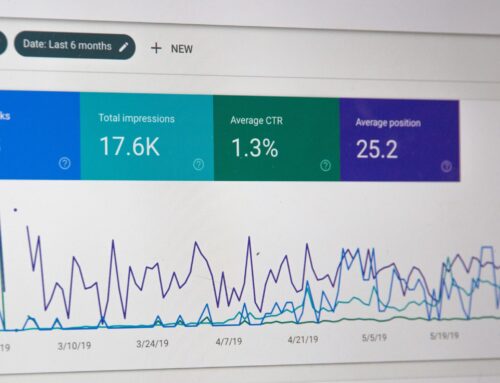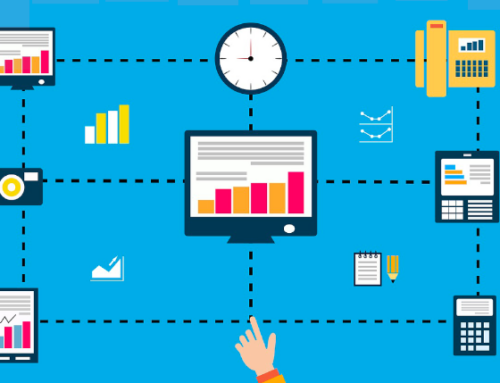How do you know if your eLearning is working? You might have a survey where learners can say what they thought of the curriculum. Or maybe you’re noticing a change in the performance and know-how of your employees. While these are helpful measures, you can learn so much more by making use of eLearning data. And don’t worry, many effective methods don’t require the help of a data scientist. Just by being creative and using an intuitive learning management system (LMS), you can maximize your eLearning in these three ways.
Plan and refine an effective learning path
 Collecting the right data can help you plan your training. If you provide learners with a pre-assessment before they interact with the material, you already have a head start. Using the data from a pre-assessment, you can personalize the learning path so that learners are focused on the areas where they’re weak. Similarly, you can use data throughout the course to see which areas your learners are struggling in, based on test score or assessment data. This is especially helpful when you can see patterns across learners. Are all learners struggling? Maybe low scores indicate where the content could be clarified or improved. Or maybe this indicates a poorly worded assessment question. Using that initial data as a starting point, you can make improvements. This type of analysis will also show you where most of your learners excel. Look at those patterns too and see how those sections were presented. You might be able to simply copy those formats into the sections that you want to change.
Collecting the right data can help you plan your training. If you provide learners with a pre-assessment before they interact with the material, you already have a head start. Using the data from a pre-assessment, you can personalize the learning path so that learners are focused on the areas where they’re weak. Similarly, you can use data throughout the course to see which areas your learners are struggling in, based on test score or assessment data. This is especially helpful when you can see patterns across learners. Are all learners struggling? Maybe low scores indicate where the content could be clarified or improved. Or maybe this indicates a poorly worded assessment question. Using that initial data as a starting point, you can make improvements. This type of analysis will also show you where most of your learners excel. Look at those patterns too and see how those sections were presented. You might be able to simply copy those formats into the sections that you want to change.
Assess the training engagement
 In addition to seeing which sections your learners find difficult, data collection can help you see which activities keep learners engaged. Depending on your LMS, you might be able to see how many learners watched the on-screen video, or even how many learners simply skimmed through it. This matters because it might force you to adjust and make that video a requirement. Or maybe this is showing you that your learners don’t want to watch a video. If you can, be flexible and think about how to improve the delivery of that content. This might be a great opportunity to create an activity where learners are interacting with the material more. Do you have activities elsewhere in your course? If so, review that data to see how learners are engaging with it. If the results look good, then use those templates more.
In addition to seeing which sections your learners find difficult, data collection can help you see which activities keep learners engaged. Depending on your LMS, you might be able to see how many learners watched the on-screen video, or even how many learners simply skimmed through it. This matters because it might force you to adjust and make that video a requirement. Or maybe this is showing you that your learners don’t want to watch a video. If you can, be flexible and think about how to improve the delivery of that content. This might be a great opportunity to create an activity where learners are interacting with the material more. Do you have activities elsewhere in your course? If so, review that data to see how learners are engaging with it. If the results look good, then use those templates more.
Gauge how learners are progressing
 Lastly, you should use data to see whether your eLearning is producing the results you wanted. The main way to test this is to see if your learners’ knowledge gaps are closing. Look at the activities or knowledge checks throughout your course. Did learners do better on their second or third attempts? Did they complete tasks at faster rates as they became more familiar with the material? Go back to the pre-assessment that your learners took. This is another chance for you to analyze those results. How did learners who scored poorly in the pre-assessment do in the course? To make these improvements more concrete, provide learners with a post-assessment. This gives a clear picture of what impact your training had on closing knowledge gaps.
Lastly, you should use data to see whether your eLearning is producing the results you wanted. The main way to test this is to see if your learners’ knowledge gaps are closing. Look at the activities or knowledge checks throughout your course. Did learners do better on their second or third attempts? Did they complete tasks at faster rates as they became more familiar with the material? Go back to the pre-assessment that your learners took. This is another chance for you to analyze those results. How did learners who scored poorly in the pre-assessment do in the course? To make these improvements more concrete, provide learners with a post-assessment. This gives a clear picture of what impact your training had on closing knowledge gaps.
Takeaways
Testing the effectiveness of your training is important. You don’t want to waste resources by continuing with methods that your learners don’t engage with. Knowing how to use data can help you avoid such mistakes. By analyzing learner engagement and performance, you can plan an effective learning path that meets the needs of your learners.
Are you unsure how to use an LMS to gather this data, or would like to learn more about how learning platforms can improve your training effectiveness? We’re here to help! Contact Digitec Interactive to set up a discovery call to see how we can help!
For more industry-focused articles like this, subscribe to our free monthly newsletter, Smarter…Faster!




